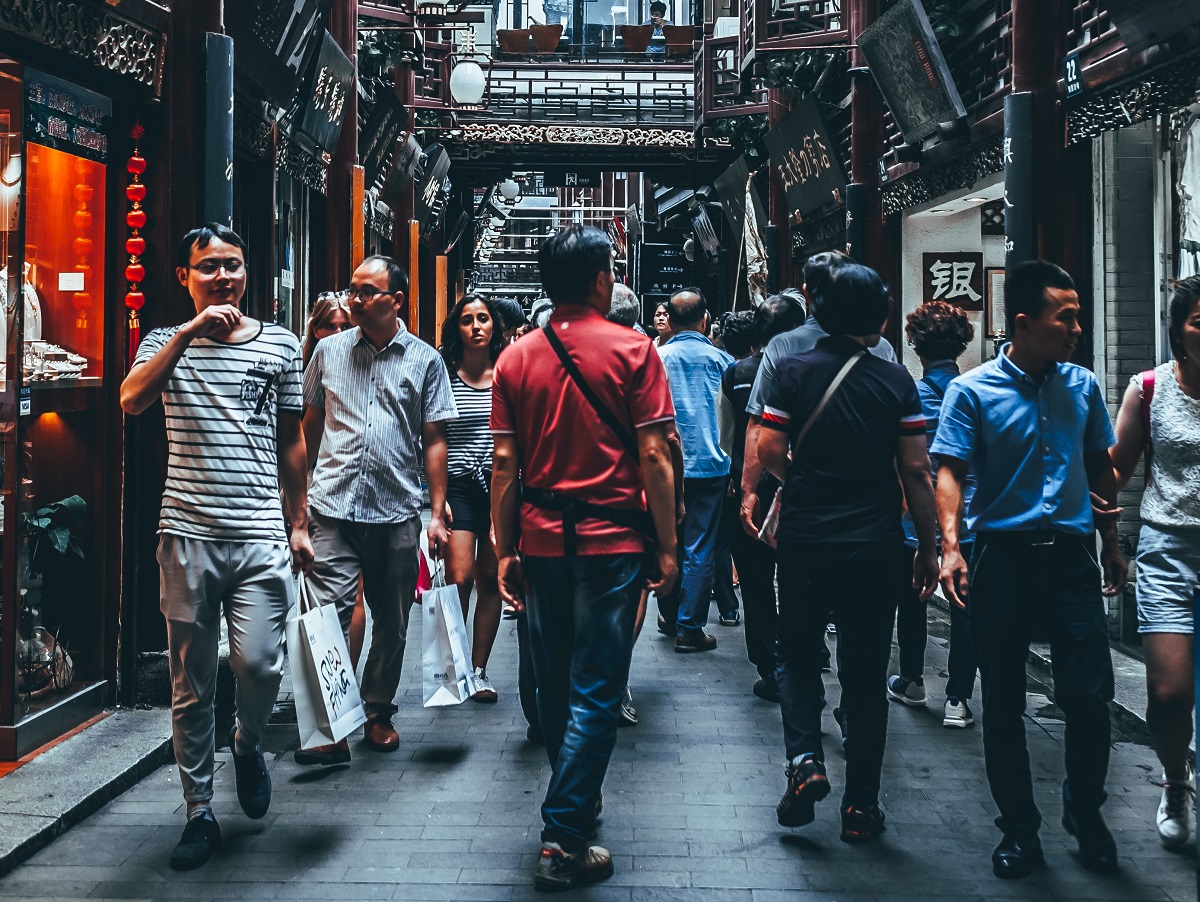
Improving macro-economic conditions are providing tailwinds for emerging markets stocks, which has seen the Morningstar Emerging Markets Equity category rise 5.07% year-to-date (Feb. 15). Indeed, Matthew Strauss, manager of the 5-star rated $175.1 million CI Emerging Markets Class F, argues emerging markets have been on an upward trajectory since late last fall and continue to have positive prospects.
“We have seen a rally since about the middle of October,” says Strauss, senior vice president at Toronto-based CI Global Asset Management. “Maybe at the start of the year the rally was a bit too much, too quick. But I think the direction is clear. Some of the fundamental changes that have unfolded toward the end of 2022, both in the U.S. and China, are pointing towards an upward trajectory for emerging markets equities in 2023.” Strauss is a 27-year industry veteran who entered the industry in 1996, after earning a MA in economics from South Africa’s Stellenbosch University. He has managed the CI Emerging Markets Class F since 2011.
Emerging Market Tailwinds
Strauss argues that the momentum of emerging markets (EM) is being pulled forward by a combination of two factors: the approaching end of monetary tightening by the U.S. Federal Reserve is in tandem with optimism about the end of China’s zero-COVID policy, which had held back economic growth. “These two factors are working together in favour of emerging markets. The headwinds for emerging equities in 2022 are fading and are expected to fade further over the coming months and quarters.”
Inflation has clearly peaked, Strauss adds, and on the interest rate side, the Federal Reserve, as well as other central banks, is getting closer to the peak of the tightening cycle. “These factors are really helping emerging markets. In the past, a combination of high interest rates and a strong US dollar had been problematic for emerging markets. But we are starting to see the other side of that story in 2023.”
Meanwhile, Strauss observes that China has shifted from a very strict lock-down approach to permit a re-opening of the economy. “A combination of those two factors—one external, the other internal within EM—auger very well for EM and has already brought about a decent rally in EM assets.”
Year-to-date (Feb. 13) CI Emerging Markets Class F has returned 5.92%, versus 4.55% for the Morningstar Emerging Markets Target Market Exposure Index (GR CAD) On a longer-term basis, the fund returned an annualized 3.00% and 5.07% over five and 10 years. In contrast, the index returned an annualized 0.16% and 2.78%, respectively. (Launched in Aug. 2021, the fund is also available as an ETF, CI Emerging Markets Alpha ETF (CIEM and CIEM.U (USD)).
The US Dollar’s Effect on Emerging Markets
Strauss believes the US dollar is likely to remain range-bound, with a weakening bias: “The US dollar rallied because of higher interest rates, and the US economy out-performing. Both those factors are now trending against the US dollar,” says Strauss. “We are not confident enough to say it will be a big plus for EM. But the larger probability is that the dollar will get weaker and that will be a plus for EM.” US dollar weakness leads to easier government financial conditions for debt re-payments in US dollars by EM governments and corporations. “A lower dollar will help with re-payment of US dollar-denominated debt, and especially for those governments running current account deficits. That’s on the re-payment side. A weaker US dollar could also indicate less stress in the market and by extension point to an increased willingness amongst investors to add more cyclical assets such as EM equities.”
Keep an Eye on Food Inflation
Fundamentals in emerging markets are improving compared to 2022. Last year’s big event was Russia’s invasion of Ukraine, which saw a dramatic spike in food prices. “Food tends to be a much bigger component in the consumer basket in EM than in developed markets and the spike in food prices deeply affected EM consumers. With agricultural products and fertilizer prices coming off their highs, food inflation in EM countries should come down in 2023, although prices are unlikely to fall back to 2021 levels.”
Strauss grants that it’s not clear how the Russian-Ukrainian conflict will unfold. “But the expectation is there: that the situation would not escalate beyond the Ukrainian borders and draws NATO into the conflict. As long as that is the case, the impact on commodity markets in 2023 should be muted. The risk is there [that the conflict goes beyond Ukraine]. And it’s a key global risk we are keeping a very close eye on.”
As far as China is concerned, Strauss argues that one must separate cyclical and structural developments: “From a cyclical perspective, we think China’s economy is in a good situation in terms of the re-opening trade and policy stimulus. The government has indicated that they want to stimulate the economy and have already done so at the margins. If we take a longer-term view, there are increased risks that investors should take into account. However, looking only at 2023, those structural risks are less of an issue.”
Emerging Markets Stocks Still Inexpensive
As markets stabilize, Strauss notes that valuations for EM stocks are still trading at a discount to developed markets. “There is still a lot of value left for EM equities, compared to their developed market peers. On a price/book value basis, EM stocks are trading at about 40% discount below developed markets.” Relative value remains compelling, says Strauss, adding that on an absolute basis, valuations have moved higher. “In early October, EM stocks were clearly inexpensive. The first part of the rally was quick and easy. Now we have moved from 10 times earnings to around 12 times. Historically, a 12 times p/e is around the average for EM. We expect Asia and China to do quite well this year, so the price-earnings multiple is expected to expand further in 2023.”
On a geographic basis, Strauss is clearly enthusiastic about China and Hong Kong because he has allocated about 39% of the portfolio to those two countries, which he regards as one block. “We have gone fairly aggressive on China because we have a bullish view of how the economy will unfold,” says Strauss, noting that the fund’s exposure is six percentage points higher than the MSCI EM Index allocation. The other large country weights are Taiwan 15%, India 15% and Mexico 8%.
On a sector basis, the fund is heavily skewed to financial services with 26.2% of the portfolio in that sector, followed by 21.7% in consumer discretionary and 15.2% in information technology. Primarily a core growth investor, Strauss seeks companies with strong qualitative factors. “Analyzing financial measures is always important. But the real value comes in understanding the qualitative aspects of a company,” says Strauss, adding that he is seeking seasoned management, a strong competitive edge, and sensible capital allocation.
Top Emerging Market Stock Picks
Running a portfolio of around 60-80 names, Strauss cites, by way of example, Trip.com Group Limited (TCOM), an American Depositary Receipt listed on Nasdaq. An online Chinese travel giant with a market capitalization of US$24 billion, the firm is regarded as one of the beneficiaries of the so-called “reopening” trade in China, in the wake of relaxation of COVD restrictions. “Its global business, which is outside of China, has increased quite significantly and is already above its 2019 levels. Where we see more upside is in the opening of China’s borders to allow travel outside the country,” says Strauss, adding that volumes on the domestic side are expected to be back to 2019 levels sometime this year. “There is a lot of pent-up demand.” Trip.com is trading at US$38 or 33 times forward price-earnings, which Strauss does not think is expensive on a historical basis. Its one-year upside is estimated around 15-20%.
A more defensive holding is Fomento Economico de Mexico (FEMSAUB), otherwise known as Femsa, a major conglomerate that has a market cap of US$29.5 billion and owns the Coca-Cola bottler in that country. “They also have a big retail business in the form of 3,000 small format stores mostly in Mexico, the OXXO chain of gas stations and they recently acquired Valora Holding AG, which owns a chain of European convenience stores.”
The stock is trading at around 156.2 pesos, or 16.5 times forward earnings, which is below the 23 times forward multiple for Wal-Mart de Mexico (WALMEX), although Strauss believes that Femsa’s multiple should be higher. “But after Femsa acquired Valora the market got concerned about Femsa’s capital allocation. The company says it will soon provide a comprehensive strategic plan. A lot of positive things could come out of that,” says Strauss, adding that the firm might also spin off some entities. “They will give us more clarity. We like the name for its visibility in generating cash. And the upcoming ‘event’ that could potentially unlock a lot of value and see the stock price move higher over a fairly short period.”























